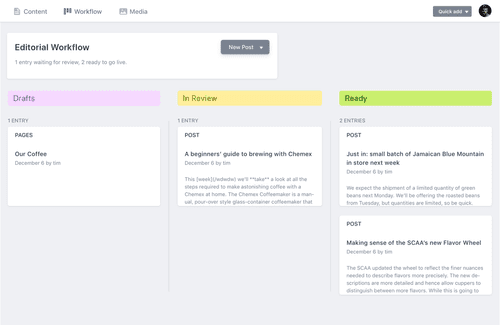Creating a blog from scratch
Development Practice
Published on February 02, 2021
Reflective writing is the main focus and assessment of the Development Practice course. The very first task we had was to create our blogs so we are set to write our reflections on all topics related to the course and our future goals.
My approach
As a software engineer, I wanted to have more freedom to customize the blog so instead of setting up WordPress or Wix blog, I opted for an ad-free open source stack. These requirements led me to Gatsby - a framework for building static websites using React. Gatsby offers many plugins which significantly reduce the amount of work required to integrate Content Management Systems such as the one I am using - Netlify.

The outcome
Overall I am happy with the blog I've created. Netlify gives me free hosting and free CMS integration, which is exceptionally easy to set up and provides a very professional workflow to manage the creation, review and publishing of new posts. On top of that, all categories and tags are automatically generated from the blog posts, so I very rarely have to touch the code for the website.

In the near future, I plan to make some small visual and functional improvements to this blog. Gatsby and Netlify allow for such continuous improvement with minimal friction for the developer.
I see this blog as an opportunity to not only track the progress through my degree but also through my new career as an Indie Game Developer.
Next time
Due to my approach, creating the website took me a lot longer than a simple Wix or WordPress websites would have. I tend to be a perfectionist when it comes to my work and I spend a lot of time improving and optimising the code. This thought me a valuable lesson - should there be an opportunity for continuous improvement, the MVP (most valuable product) is enough to deploy and share for feedback. This lesson can be applied to many aspects of my work and future goals. From programming to 3D modelling and animation, I should always strive to stop after 80% completion (Dunford and Tamang, 2014) unless absolute perfection is required.
References
Dunford, R., Su, Q. and Tamang, E., 2014. The Pareto Principle.
If you like it, share it!
